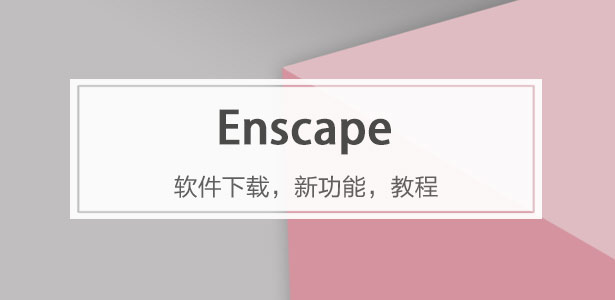
下載app免費領取會員






設計單位? 東南大學建筑學院城市與建筑設計工作室
項目地點? 江蘇南京
建成時間? 2023年
建筑面積? 22000平方米
本文文字由設計單位提供。
01
序言
南京壓縮機廠成立于1950年代,閑置的廠區(qū)保存了八十年代鼎盛時期的廠房格局,在南京市規(guī)劃局公布的《南京市工業(yè)遺產(chǎn)保護規(guī)劃》名錄中屬于二類工業(yè)遺產(chǎn)。2019年,當?shù)卣疀Q定將南京壓縮機廠房舊址改造為社區(qū)中心,為周邊居民提供社區(qū)服務、文體活動、醫(yī)療養(yǎng)老等功能。將社區(qū)中心功能植入老廠區(qū),不但減少了政府對于社區(qū)中心的土地投入,而且為荒廢的廠區(qū)引入了社區(qū)生活的活力。這樣的功能要求填補了工業(yè)遺產(chǎn)更新項目類型的一個空白,同時,社區(qū)中心復雜的功能配置也大大提升了設計工作的難度。
Nanjing Compressor Factory, established in the 1950s, maintains its factory layout from its heyday in the 1980s, despite being currently idle. It is categorized as a Class II industrial heritage site in the "Nanjing Industrial Heritage Protection Plan" published by the Nanjing Municipal Planning Bureau. In 2019, the local government made the decision to transform the former Nanjing Compressor Factory into a community center, offering community services, cultural and sports activities, medical care, and elderly care to the surrounding residents. Integrating the community center function into the old factory area not only reduces the government's land investment in the community center but also brings vitality to the abandoned factory area, enriching community life. This functional requirement fills a gap in the types of industrial heritage renewal projects, while the complex functional configuration of community centers greatly increases the difficulty of design work.

▲ 視頻:改造后的社群中心? ?東南大學建筑學院城市與建筑設計工作室
02
更新前的廠區(qū)
項目用地被住區(qū)包圍,僅有東北角一處能與城市道路連接,并在這里有一小片可以新建建筑的場地。用地內目前保留了四棟廠房、兩處構筑物,以及建廠初期保存至今的林蔭道。保護內容包括:三棟廠房,為鋼筋混凝土排架結構;一棟零件庫,是國內第一座“拱形曲面網(wǎng)架結構”工業(yè)建筑,2300平方米的無柱空間極具特色;氣力輸送塔、循環(huán)水池,這兩處構筑物也是記錄了生產(chǎn)工藝流程信息的重要遺存物。
The site is encircled by residential areas, with only one area in the northeast corner accessible to urban roads, featuring a small plot for new construction. Within the site, four factory buildings, two structures, and a green avenue preserved since the initial construction phase are currently maintained. The protected elements include: three factory buildings with reinforced concrete bent structures; A parts warehouse, the first industrial building in China with an "arched curved grid structure," boasting a distinctive 2300 square meter column-free space; The pneumatic conveying tower and circulating water pool are also significant relics elements of the production process information.



03
工業(yè)遺產(chǎn)的保護: 守護城市記憶
安全性、真實性、可逆性,是我們在工業(yè)遺產(chǎn)保護中始終堅持的三大原則。在南京壓縮機廠,我們保證歷史建筑的結構安全,保護和還原歷史建筑的原有風格和特點,令新建的鋼結構與廠房原有混凝土結構完全脫開,保證更新過程的可逆性。
Safety, authenticity, and reversibility are the three principles in the protection of industrial heritage: ensuring the structural safety of historical buildings, preserving and restoring their original style and characteristics, and completely separating newly constructed steel structures from the original concrete structures of factories to ensure the reversibility of the renewal process.


首先,我們將現(xiàn)存的工業(yè)遺產(chǎn)逐一編號,進行了測繪調研和結構鑒定,并給出了相應的評估結論。
Firstly, we numbered each of the existing industrial heritage elements, conducted surveys and structural appraisals, and provided corresponding evaluation conclusions.
經(jīng)評估,廠房主體結構安全性符合要求,僅磚墻維護墻構造措施不滿足抗震要求。我們研究了如何在不影響磚墻外觀的前提下進行抗震加固,最后采用了“植筋拉結加固”工藝:在磚縫中開槽布設拉結鋼筋,與混凝土柱連成一個整體,再采用聚合物砂漿修復磚縫開槽部位,保證結構的安全性和外立面的完整性。
Upon evaluation, the main structure of the factory buildings was found to be safe, yet the construction measures for the brick maintenance walls did not meet seismic standards. We researched how to perform seismic reinforcement without altering the appearance of the brick walls, ultimately opting for the "planting and tie reinforcement" technique: embedding tie bars within the brick joints, integrating them with the concrete columns, and subsequently repairing the slotted brick joints with polymer mortar, thereby ensuring the structural safety and the integrity of the exterior facades.
外墻修復則采用了剝離、修復、保護三步驟,將破壞建筑紅磚墻體原始美感的紅色涂料進行人工清洗及打磨去除,局部采用磚粉修復,最后加透明有機硅涂層進行保護,還原磚墻原有的質樸的歷史氣質。
The exterior wall restoration involved three steps: stripping, repairing, and protecting. The red paint, which detracted from the original beauty of the red brick walls, was manually cleaned and polished, with some areas restored using brick powder. A transparent silicone coating was subsequently applied for protection, reviving the brick walls' original rustic charm.


場地東南角原有約兩米深的廢棄循環(huán)水池,我們將其改造為下沉廣場,可以展開社區(qū)里最受歡迎的廣場舞、街頭籃球和輪滑等活動。
Originally located in the southeast corner of the site was an abandoned circulating water pool approximately two meters deep. We converted it into a sunken plaza, hosting popular community activities like square dancing, street basketball, and roller skating.
鋼制的氣力輸送塔原來所處的位置隱蔽,經(jīng)結構加固和出新后被遷移至下沉廣場的水景前。這里是主入口軸線的盡端,新的“氣力輸送塔”起到了標志塔的作用。一條步行橋繞過氣力輸送塔后,穿入各個廠房,連接了社區(qū)中心的所有公共活動區(qū)域。
Initially concealed, the steel pneumatic conveying tower was relocated to the front of the sunken plaza's water feature after structural reinforcement and renovation. Positioned at the end of the main entrance axis, the new "pneumatic conveying tower" now serves as a prominent landmark. A pedestrian bridge, bypassing the pneumatic conveying tower, connects various factory buildings and links all public activity areas in the community center.
我們對林蔭道路上的樹木也進行了測繪和記錄,使其得到了妥善的保護。
We also surveyed and documented the trees along the tree-lined roads, ensuring their adequate protection.

04
工業(yè)遺產(chǎn)的更新:重塑原真性
社區(qū)中心具有開放性、公益性、多元性、復合性的建筑特征,在提供社會服務和公共空間的同時也應記錄城市的歷史印跡,公共文化層面上的原真性與功能性物質空間的真實性同樣重要。
Community center has features of openness, public welfare, diversity, and complexity. While offering social services and public spaces, they should also preserve the historical imprints of the city. Authenticity at the public cultural level holds equal importance to the authenticity of functional material spaces.
在即將被改造成社區(qū)中心的廠區(qū),有對過去的回顧,也有對未來的期待,我們希望能夠抓住這一機遇,重塑場所的原真性,既給周邊居民創(chuàng)造一個開放的公共活動平臺,也是對工業(yè)化時代印跡的珍貴留存。
In this project, there lies a reflection of the past alongside anticipation for the future. We aspire to seize this opportunity to reshape the authenticity of the place, creating an open public activity platform for the surrounding residents and preserving the precious imprint of the industrial era.

云影長廊
“云影”空間是建筑群的核心軸線,串聯(lián)了社區(qū)文化、體育、商業(yè)、菜場、育兒園等功能。經(jīng)過多輪方案比較,我們選擇了以輕質的形態(tài)介入老廠房之間的策略,意圖是在用一種具有強烈反差感的“外物”與原有工業(yè)廠房實用且堅固的建筑性格形成鮮明的對比。
The "Cloud Shadow" space is a long corridor serving as the core axis of the building complex and connecting community cultural, sports, commercial, market, and nursery functions. After multiple rounds of scheme comparisons, we chose a strategy of light intervention between the old factory buildings, aiming to create a sharp contrast with the practical and sturdy architectural character of the original industrial buildings through a "foreign element" with a strong sense of contrast.



“云影”由一排白色的構架構成,人字形外輪廓呼應了兩邊廠房的排架結構,構架的圓弧形負形則呼應了軸線西端D1廠房的圓拱形態(tài)——這樣就巧妙地呼應了周邊廠房的兩個重要元素。連綿的白色構架插入兩棟工業(yè)遺跡之間,起伏的內部曲面和變幻的光影朦朧純凈,仿佛云影漂浮在空氣中。
"Cloud Shadow" is composed of a row of white frames, with a V-shaped outer contour echoing the frame structure of the two factory buildings on either side, and the arc-shaped negative space of the frames echoing the circular arch shape of D1 factory building at the west end of the axis - thus ingeniously responding to two important elements of the surrounding factory buildings. The continuous white frames are inserted between the two industrial relics, with undulating internal surfaces and changing light and shadow creating a hazy and pure effect, as if cloud shadows were floating in the air.




D1廠房(零件庫)
經(jīng)過結構檢測鑒定,零件庫網(wǎng)架節(jié)點螺栓連接牢靠,部分構件及涂層存在銹蝕現(xiàn)象。但是彩鋼板屋面年久失修,漏水嚴重,已經(jīng)無法作為建筑圍護物來保留。我們拆除了彩鋼板屋面層,保留了最具特色的“拱形曲面網(wǎng)架結構”。為表現(xiàn)網(wǎng)架結構三角錐形的單元特征,我們在網(wǎng)架上安裝了三角形的膜材料裝置——“飛鳥”,像一群小鳥“飛翔”在拱頂上。
After structural inspection and assessment, it was found that the bolt connections of the parts warehouse's grid structure nodes were secure, but some components and coatings showed signs of rust. However, the color steel plate roof was in a state of disrepair and leaked severely, making it impossible to retain as a building enclosure. We removed the color steel plate roof layer and preserved the most distinctive "arched curved grid structure". To highlight the triangular pyramid-shaped unit features of the grid structure, we installed triangular membrane material devices - "flying birds" on the grid structure, resembling a flock of birds "flying" on the arch.
在網(wǎng)架內,我們重新搭建了空間:社區(qū)菜場設置在底層,適當?shù)目臻g高度減少了菜場運營的空調負荷;菜場上層設置了社區(qū)農(nóng)場和育兒園,形成一個綠色的“生態(tài)之丘”。平臺上還設計了天窗,在給菜場引入自然光線的同時,也給上層的孩子們創(chuàng)造一個觀察菜場活動的小窗口。
Inside the grid structure, we reconfigured the space: the community market was set up on the ground floor, and the reduced space height reduced the air conditioning load for the market's operation; above the market, a community farm and a nursery were set up, forming a green "ecological hill". Skylights were also designed on the platform, introducing natural light to the market while creating a small window for children on the upper floor to observe the activities of the market.



D2和D3廠房
建筑空間高達11.6米,天窗和屋架極具工業(yè)結構的美感。我們在廠房內局部搭建了3米高的鋼結構平臺,平臺下空間作為車庫。平臺上開放空間為社區(qū)文體活動區(qū),其中一部分空間保留8.6米高度,可以容納球類運動;其他部分則增設樓板,分隔成兩層,容納文化活動。
The interior space is as high as 11.6 meters, with skylights and roof trusses showcasing the aesthetic appeal of industrial structures. We partially built a 3-meter-high steel structure platform inside the factory buildings, with the space beneath used as a garage. The open space on the platform serves as a community cultural and sports activity area. Part of this space retains a height of 8.6 meters, allowing for ball games; the other part is equipped with floor slabs, divided into two levels to accommodate cultural activities.





D4廠房
功能為社區(qū)的街道辦公,相對內向。辦事大廳部分面向廣場,提高公共性和可達性。
Its function is for community offices, relatively inward. The part of the service hall faces the square, enhancing public accessibility and visibility.
新建部分采用鋼結構,與廠房原有混凝土結構完全脫開。鋼結構的易拆卸特點也保證了更新過程的可逆性。
The newly built part uses steel structure, completely separated from the original concrete structure of the factory building. The easy disassembly feature of the steel structure also ensures the reversibility of the renovation process.

新建醫(yī)療養(yǎng)老服務中心
該建筑由社區(qū)醫(yī)院和社區(qū)養(yǎng)老院組成,功能要求嚴格,不適合用老廠房改建,只能設置在場地內唯一滿足日照和可以新建建筑的區(qū)域。建筑1—3層為社區(qū)醫(yī)院,立面采用紅磚幕墻,高度上約為12米,與南側的廠房同高;4—6層為養(yǎng)老院,立面采用玻璃幕墻和銀灰色穿孔鋁板,簡潔輕盈,削弱了體量。這樣,在沿林蔭大道,整個建筑群呈現(xiàn)了出連貫的視覺效果。
This building consists of a community hospital and an elderly care service center, with strict functional requirements that make it unsuitable for renovation of the old factory buildings. It can only be located in the only area within the site that meets the sunlight requirements and allows for new construction. The first to third floors are the community hospital, featuring a red brick facade approximately 12 meters high, matching the height of the factory building to the south; the fourth to sixth floors are the elderly care service center, with a facade of glass and silver-gray perforated aluminum panels, creating a simple and light appearance that reduces the volume. Thus, along the tree-lined avenue, the entire building complex presents a coherent visual effect.


05
結語:輕與重的交織? 新與舊的融合
項目總指導王建國院士在設計之初對團隊指引了大方向:“工業(yè)遺產(chǎn)改造為社區(qū)中心不能僅僅滿足于功能的配置,要意識到這是一個對城市修補和提升的行動,最終的成果需要提供一個批判性的反思樣本。”
At the beginning of the design, Academician Wang Jianguo, the overall project director, guided the team in a broad direction: "The transformation of industrial heritage into a community center should not merely focus on the configuration of functions. It is essential to recognize that this is an action for urban repair and improvement. The final outcome should provide a critical reflection sample."
在這個項目中,我們追求的不是地標性和儀式感,而是有深度和溫度的公共空間,是帶著城市記憶的場所營造,是日常生活的煙火氣息。 在項目建成后,我們收到了不少周圍居民和南京壓縮機廠退休職工表達謝意的留言。老廠區(qū)留存的城市記憶觸動人心,社區(qū)豐富的生活為老廠區(qū)帶了勃勃生機——這組建筑成為了工業(yè)遺產(chǎn)保護與更新項目中一個獨特的案例。
In this project, what we pursue is not landmark or a sense of ceremony, but a public space with depth and warmth, a place with urban memories, and the vitality of daily life. After the project was completed, we received many messages of gratitude from the residents and retired workers of Nanjing Compressor Factory. The urban memories preserved in the old factory area touched people's hearts, and the community life brought new vitality to the old factory area – the project has become a unique case in the protection and renewal of industrial heritage.




設計圖紙 ▽













完整項目信息
項目名稱:南京壓縮機廠保護與更新/尤家凹社區(qū)中心項目
項目類型:建筑/改造
項目地點:江蘇南京
設計時間:2019—2021
建設時間:2021—2023
用地面積:2.27萬平方米
建筑面積:2.2萬平方米
方案設計團隊:東南大學建筑學院城市與建筑設計工作室
團隊名單:馬進、錢晶、楊靖、馬竹君、潘一峰、張城鑫、范欽鋒、劉萬松、翟詩洋、簡海睿、金昊吉、許嘉航、劉影竹、王強
聯(lián)系方式:332143603@qq.com
其他參與團隊:
施工圖:南京長江都市建筑設計股份有限公司
景觀:上海羅朗景觀工程設計有限公司
幕墻:弗思特建筑科技有限公司
建筑:南京長江都市建筑設計股份有限公司
結構:南京長江都市建筑設計股份有限公司
景觀:上海羅朗景觀工程設計有限公司
施工:龍信建設集團有限公司
材料:陶磚、ETFE膜、穿孔鋁板
業(yè)主:南京頤薈居房地產(chǎn)開發(fā)有限公司、仁恒(中國)投資集團有限公司
攝影:侯博文、ZZB攝影
版權聲明:本文由東南大學建筑學院城市與建筑設計工作室授權發(fā)布。歡迎轉發(fā),禁止以有方編輯版本轉載。
投稿郵箱:media@archiposition.com
本文版權歸腿腿教學網(wǎng)及原創(chuàng)作者所有,未經(jīng)授權,謝絕轉載。

上一篇:BIM建筑|地下美術館:BRITA 131藝術空間 / 蔣杰設計事務所
下一篇:BIM建筑|華東師大滴水湖國際軟件學院 / EID Arch姜平工作室+華東院






推薦專題
- 建筑賞析|“樹屋”重構居住想象,七個庭院圍合出的家,原來生活可以如此詩意
- 建筑賞析|從白盒子到街道:城市策展如何喚醒"沉睡的角落"?
- BIM建筑|華東師大滴水湖國際軟件學院 / EID Arch姜平工作室+華東院
- BIM建筑|南京壓縮機廠保護與更新:尤家凹社區(qū)中心 / 東南大學建筑學院城市與建筑設計工作室
- BIM建筑|地下美術館:BRITA 131藝術空間 / 蔣杰設計事務所
- 建筑賞析|珠江畔的空中伊甸園——琶洲雅詩閣酒店
- BIM建筑|空谷傳響:17座墓園建筑攝影
- BIM建筑|比利時Royale Belge大樓改造,20世紀總部地標的新生
- 建筑賞析|華發(fā)靜安里:時間繁花,續(xù)寫百年盛情
- 建筑賞析|會發(fā)電的“波浪屋頂”VS會呼吸的“空中森林”:米蘭冬奧建筑玩起“超能力大賽”



































